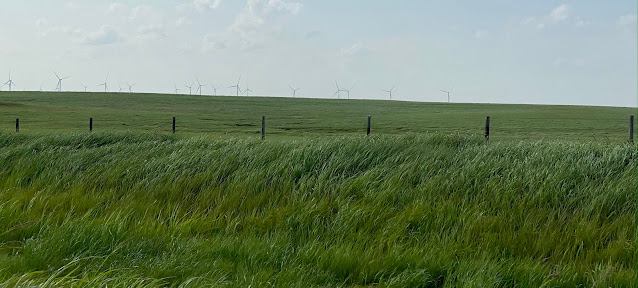Osage
It's been a year since I traveled out there, and still I struggle for the words to describe what I saw, the feelings that came up/still exist, and how little I really know about spaces and places in the USA.
I heard a story. A remarkably sad and almost unbelievably true one. It involved what humans actually do to one another. Not in war times. Not in conflict. But not exactly peace either. Have we ever really had peace?
The Osage Plains, Osage People, Osage Nation, Osage County, and Osage, Oklahoma are all both very interconnected and not at all the same.
First the plains: they are a part of the vast central lowlands of North America and cover 4 states (western MO, southeastern KS, central OK, and north-central TX). The traditional Osage Lands stretched even further than these 4 states (a huge part of OK,KS, MO, AK, with a dip into Texas on top, and LA on bottom).
We were in the area of central OK and traveled to the outer rims of Missouri and Kansas.
Time, discovery and exploitation of natural resources, changes in land ownership through treaties, theft, and sales, along with encroachment, displacement, and downright murder have really changed a great deal of the social fabric in the area, as I am sure climate change and man-made changes have altered the area, but let me just share in pictures the vastness of what it means to be out in the plains:
The vast area in Oklahoma is further subdivided into regions. The central plains are also known as the "Tallgrass Prairie."
The "Tallgrass Prairie," is an area of broad rolling hills and tall grasses. I never realized how many different kinds of grasses there are in the world as well as in different regions. This region, has its own ecosystem that once covered almost 200 million acres of land. Now there is less than 4% of this land left (most turned into farmland as you see above).
Two surprise learnings: 1. Even though it was extremely hot when we were there, on the plains, the wind always seemed to be blowing, and 2. I knew all about the oil on the land from book reading and prior knowledge, but the wind turbines were unexpected.
Once upon a time this was a big brewhaha in the area that made the news (2014). Sadly it was a controversy that once again pitted white farmer folk against Osage Indians concerned about the Eagles the turbines could kill.
wind-farm-controversy-in-pawhuska
An odd juxtaposition of old and new technology on the land.
Cattle ranching with a twist (or is it a turn)! This ranch is abutting Osage Nation land. As earlier mentioned, there was opposition to this new technology. However, the Osage, environmentalists, and other concerned landowners have not prevailed over time.
https://ejatlas.org/conflict/osage-wind-project-usa
The Osage Nation are a Native American tribe. Their ancestral lands have been greatly reduced, but they are a Federally recognized tribe with tribal lands, a reservation, and their own tribal government.
The name "Osage" comes from the early French traders. It was the French version of the Osage word "Wa-zha-zhe", which means "Children of the Middle Waters." Early Osage hunted as well as farmed, and lived in many small bands or groups around the region. They still live in many different places around Oklahoma and the U.S. Locally, tribal headquarters are in Pawhuska.
See older blog:https://kendraedmonds4.blogspot.com/2021/10/sojourn-2021-bearing-witness-or-seeking.html
The Osage Nation (/ˈoʊseɪdʒ/ OH-sayj), "People of the Middle Waters" have a visitors center in Pawhuska
But I really was somewhat traumatized by all the hoopla, white tourists, along with the overshadowing by the Merchantile Store, Drummond woman/tv personality, awful guided tour, that frankly I was too embarrassed to go into any of the Osage Nation places that I had for years waited to visit.
Instead we drove to the outside towns where the actual drama of the book/soon-to-be movie took place. The Osage have a Reservation that they themselves bought from our federal government on land they had been forced to move from and then back to (so confusing and complex it all was/is to me) that basically is all of Osage County. They have about 1,470,000 acres- a great deal of land is leased out.
Much has been done to the Osage people as the U.S. (and by this I mean white men from history-critical race theory ban in Oklahoma BE DAMNED!) acted out its "manifest destiny" and pushed for more and more: land, power, and overall rule of the land. Critical governmental actions (Indian Removal Act) were devastating. Followed by the Dawes Act (subdividing tribunal communal land into allotments) and there you have the basic dismantling of strong Native American/Osage reservations and attempts to destroy tribal government. I was happy to see that the Osage Nation had both an active government and license plate. I was unhappy that we saw very few tribal activities and/or people from the Osage community.
I bet you are wondering about the numbers, I know I was. Originally, the Osage set up 3 towns: Pawhuska, Hominy, and Fairfax. Pawhuska has about 3,500 people of which 31% are Native American (approx. 1,000). Hominy also has about 3,500 with about 25% Native American (875) and Fairfax about 1,400 with about 24% Native American (336). So there you have it: manifest destiny wins. BUT... they are still there. Maybe not in the numbers they once were, but...STILL.THERE.
We took the left turn and headed to the older places and spaces where the bad things happened.











No comments:
Post a Comment